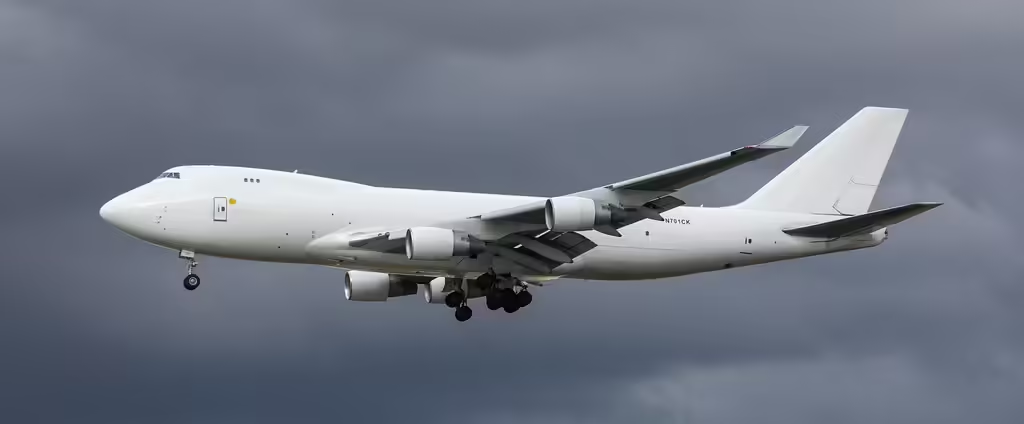
Table of Contents
White tail aircraft are those produced without a buyer, often due to certification issues or cancellations.
The name was derived from the light colored primer on the aircraft’s body.
Airlines can benefit from offloading white tails as it provides a faster means of expanding their fleet.
‘White tail’ is a term you may come across when evaluating the status of a manufacturer’s order and delivery books. For an aircraft manufacturer, these types of aircraft are usually not exciting because unsold inventory is never good. However, in the context of airplanes, what does the term “white tail” mean? Let’s investigate more closely to find out.
What are white tail aircraft?
In short, the term describes an aircraft manufactured without a customer. These aircraft have no customers or liveries, hence their name, “white tails”. This can be due to several reasons:
- To maintain its production momentum, a manufacturer may continue to build a particular aircraft even in the absence of a buyer.
- It is possible for an airline to cancel an order for a particular flight.
- Orders are converted to other variations by customers.
- A model may not receive certification on time or may not be grounded.
Not every aircraft with a “white” tail is actually white, either on the main sound or on the tail, despite the wording. The phrase originates from the practice of coating aircraft during or after production with a light-colored primer, often light gray or white, to reduce corrosion and reflect sunlight. To prevent corrosion, newly built aircraft are now coated with zinc phosphate or green zinc chromate primer. But this primer is removed and usually replaced with a lighter base paint.
Why Are Newly Built Airplanes Green?
Do you know the reason behind this aesthetic quirk?
But why is white the color chosen? There are a few reasons:
- It reflects sunlight and heat most efficiently
- Brighter colors make airframe inspections easier
- A light base color can easily be painted over
- It is cheaper than painting in other colors
How often does a white tail fly?
It is likely that the airline repainted the white-tailed aircraft before taking to the skies. However, on occasion, white-tailed planes are still flown as is—without any additional painting.
This is usually for charter and ACMI operators as it allows flexible deployment of their aircraft across multiple brands. Sometimes a branded airline, in an effort to quickly increase capacity, operates a white tail without a livery.
The white tail you see at the airport is most likely from a charter operator. Several major charter airlines have fleets of white-tail aircraft, such as:
- Air Atlas
- Hello Fly
- Titan Airlines
Pandemic and MAX groundings
Manufacturers will continue to incur additional costs for white tail aircraft to keep in stock, and may give potential buyers the impression that they are rushing to get rid of their inventory. As the Boeing 737 MAX grounding forced many customers to cancel or postpone orders, Boeing ended the white tail of up to 200 planes, leaving a large backlog of next-generation narrowbodies that had not been discovered and delivered.
The American plane maker has since successfully recovered and is able to sell a large number of undelivered aircraft. Of course, when the company halted deliveries for nearly 15 months, there were still a large number of white-tailed 787 Dreamliners left, so it wasn’t just 737 MAX planes.
Boeing’s European rival Airbus, on the other hand, had a better pandemic situation until July 2021; The aircraft manufacturer is said to have no white tails. The company had several Airbus A380 white tails before the pandemic as customers canceled their reservations and demand for the quadjet fell.
The airline industry is always full of new developments! What aviation news will you check out next?
Why Qantas Has Put A White Tail 787 Straight Into Storage
White-tailed “orphans” cannot be ignored. Some of the planes were supposed to be part of the airline, but the deal was broken. Most of the time, they will still have white tails, although there have been instances where the buyer backed out and the aircraft was already painted in their plan. Below is an example: the Hainan Airlines 787-9 Dreamliner that would eventually become part of Lufthansa’s fleet but was not acquired by the Chinese airline. These aircraft frequently have a customer cabin arrangement.
Airlines can benefit
Customers need white tail offloading for unsold aircraft, and manufacturers may be willing to provide less than market value to get rid of their surplus. For example, Boeing tried to resell a canceled MAX order to Delta in 2020, but was allegedly unable to.
More importantly, white tail aircraft can help airlines add new planes to their fleets more quickly than if they were further down the production line. Southwest Airlines was able to profit more than the 737 MAX aircraft available; By November 2020, it was revealed that the airline planned to purchase up to 30 aircraft. Rather than being a new purchase, these will replace Southwest’s current order, giving the airline same amount of MAXs sooner.
READ | Aircraft: World’s 10 Largest Optimal Commercial Aircraft By 2023
READ | Bush planes: Power Features That Set Them Apart From Other Types Of planes
READ | 7 Ranking every Boeing passenger jet from worst to greatest


3 thoughts on “White Tail Aircraft: A Comprehensive Overview of This Aviation Powerhouse”